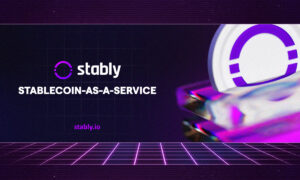Visualize a world where your morning coffee is brewed precisely to your taste, thanks to an intelligent coffee machine that comprehends your preferred strength. Envision yourself effortlessly managing home temperature and lighting with a mere voice command or swipe on your smartphone. From health-tracking wearables to virtual assistants streamlining our routines, consumer technology has redefined our lifestyle. In this article, we delve into how these innovations are reshaping daily existence, enhancing convenience, efficiency, and excitement.
Introduction: Deciphering Contactless Payment
As the term implies, contactless payments involve transactions without physical interaction with the payment terminal. Instead, a simple placement of your card or phone near the reader finalizes the transaction. The process is swift, convenient, and secure, explaining the mounting popularity of this payment method.
Recent times have witnessed an expanding acceptance of contactless payments across various venues. From public transportation to vending machines, the ‘tap and go’ approach is gaining traction. With technological advancements, we can anticipate further adoption of this payment mode.
One of the key merits of contactless payments is the rapidity and convenience it offers. Without the need for cash handling or PIN input, transactions are accomplished in seconds. This is particularly advantageous for small purchases, minimizing waiting times.
The security aspect is another highlight of contactless payments. Transactions made with cards or phones are encrypted, preventing interception by malicious parties. Furthermore, financial institutions have instituted safeguards that absolve you of liability for unauthorized charges in case of card loss or theft.
If you haven’t embraced contactless payments yet, now might be the perfect time to explore their benefits!
Advantages of Utilizing Contactless Payment
Contactless payment yields an array of advantages, encompassing:
Speed and Convenience – Contactless payment outpaces traditional methods like cash or cheques, making it ideal for individuals on the move. A mere card or phone placement initiates an almost instantaneous transaction.
Enhanced Security – Contactless payments entail encrypted and secure transmission of card data, thwarting interception or replication. Additionally, banks offer protections that absolve you of liability in case of card or phone loss.
Rewards and Loyalty Points – Many banks and credit card issuers offer rewards or loyalty points for contactless transactions, offering additional perks.
Reduced Fees – Certain financial institutions levy lower fees for contactless transactions compared to cash withdrawals.
Wider Acceptance – The proliferation of businesses accepting contactless payments ensures its applicability across diverse settings.
Challenges Linked to Contactless Payment
While the merits of contactless payments are evident, challenges are also present. One challenge pertains to monitoring expenses, as the absence of cash handling or card swiping can obscure spending awareness. This can lead to overspending, which poses a challenge for adhering to budgets. Moreover, contactless transactions sometimes entail higher costs than traditional methods like cash or debit cards, necessitating vigilance regarding associated fees. Given its relative novelty, limited acceptance can be frustrating, especially if a desired store lacks the technology to accommodate contactless payments. Despite these challenges, the convenience and efficiency of contactless payments are driving their increasing popularity.
Global Uptake of Contactless Payment
The global adoption of contactless payment is surging as consumers seek swifter, more effortless methods to settle payments. This mode enables users to tap their credit/debit card or mobile device on a point-of-sale reader to complete a transaction without PIN entry or signature.
Several factors underpin the growing appeal of contactless payments. Firstly, it’s exceedingly convenient, particularly in time-sensitive scenarios. No more fumbling for cash or awaiting card authorization a quick tap and you’re done. Additionally, it guarantees robust security; each encrypted transaction transpires without relinquishing your card or device to others.
Retailers and restaurants worldwide, including the United States, United Kingdom, Canada, Australia, Singapore, Hong Kong, and more, are swiftly embracing contactless payments. In fact, Mastercard plans to introduce contactless payment technology in 80 countries by the close of 2017. As adoption continues, an expansion in businesses accepting contactless payments is likely.
Security and Safety Considerations
While contactless payments offer numerous advantages, certain security and safety concerns must be heeded. In contactless payments, credit/debit card details are wirelessly transmitted to the merchant’s terminal. This wireless transmission raises the potential for interception by individuals with wireless devices. Additionally, losing a credit/debit card exposes the possibility of unauthorized contactless payments.
To shield against fraud, it’s imperative to exclusively utilize contactless payments at reputable vendors. Furthermore, keep your card securely stored and regularly monitor your account for unauthorized charges. Should you suspect card compromise, promptly notify your financial institution.
Companies Embracing Contactless Payment
Presently, a plethora of companies are integrating contactless payments into their business framework, spanning retail to food service.
Prominent examples comprise:
Apple Pay – Among the most renowned contactless payment methods, Apple Pay enables purchases using iPhones and Apple Watches.
Samsung Pay – Employing NFC technology, Samsung Pay empowers purchases via Samsung devices.
Google Pay – Google’s iteration of a mobile payment platform, compatible with Android devices and select outlets.
Paypal – An early digital payment platform, now incorporating contactless payments via “Paypal Here.”
Square – A company offering point-of-sale systems and its contactless payment solution, “Square Contactless and Chip Reader.”
Conclusion
Contactless payments have streamlined and secured the shopping experience. With ongoing technological advancements, these systems are increasingly accessible and convenient for both consumers and businesses. As this trend accelerates, the numerous advantages of contactless payments will continue to shape the shopping landscape.


































